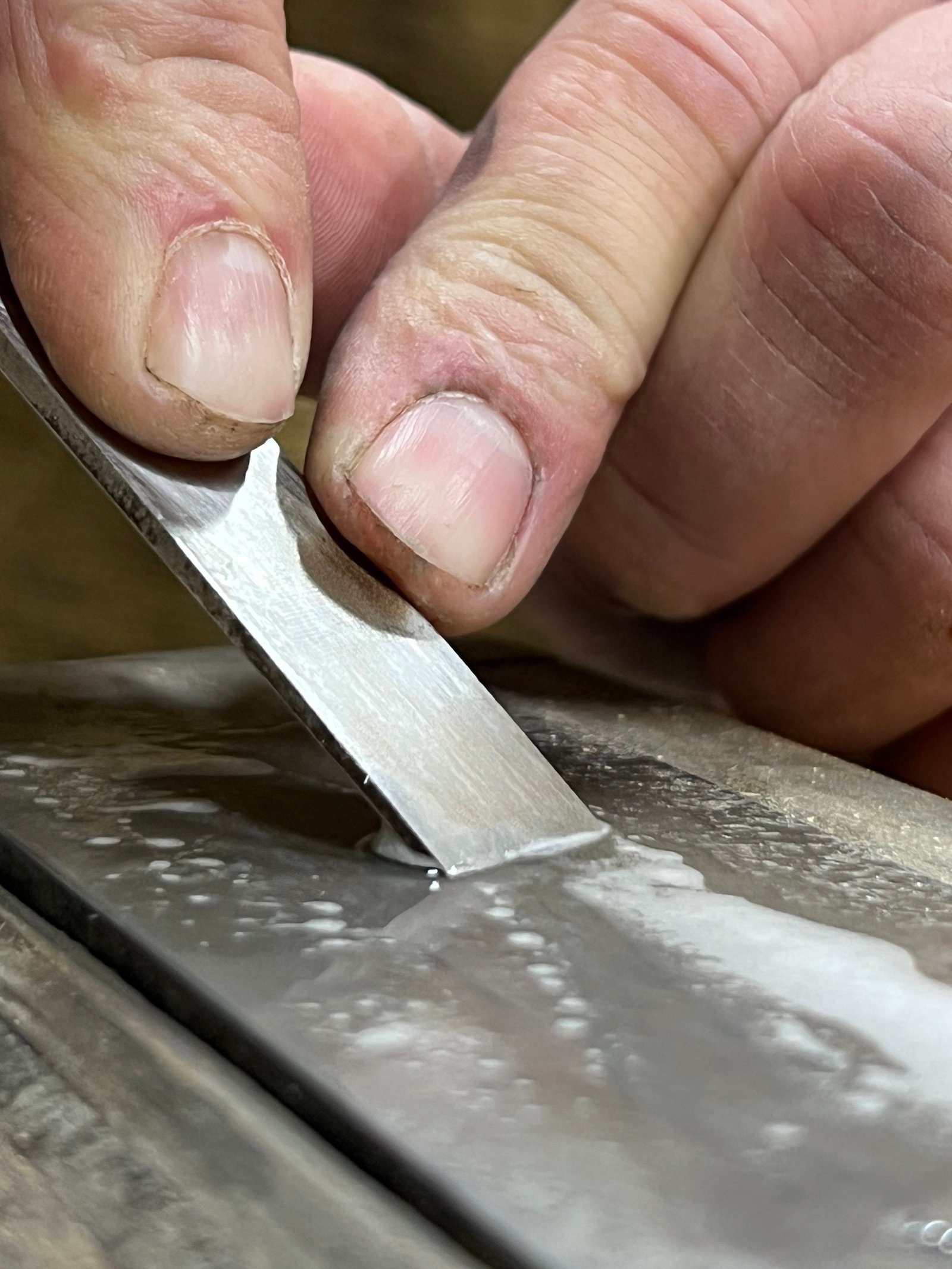Sharpening is one of those deceptively simple concepts that is so often overlooked as a crucial part of becoming a woodworker. When I first started woodworking the biggest mistake I made was thinking that sharp was something you buy. Now we all love tools that come off the shelf perfectly sharpened and make accurate clean cuts. For things like saw blades and router bits it’s an essential component that they are sharp and come with a carbide tip so they can maintain an edge cutting everything from sheet goods to hardwoods like oak, walnut and paduk.
But if you rely only on sharp power tools you will always be limited by the tool rather than your own skill. This is why learning how to hand sharpen should be a priority for beginning woodworkers. When you can consistently and quickly get a surgically sharp edge on a marking knife, a chisel or a plane iron, you realize that there is another level of precision that you can rely on and it is found in you as the craftsman and not just the tool.
The thing about sharp is that things just don’t stay razor deadly sharp for very long. Sure you can baby a set of perfectly honed Japanese knifes making sure they never slam into the cutting board harder than they need to or God forbid cut into a bone. In woodworking we are dealing with wood, not vegatables or hair.
And wood is hard.
If you are doing chisel work, or planing sharpening is something that should be happening in rhythm with your work and be dictated by the feel of the tool on the wood.
I used to try and power through a dull tool not wanting to stop and waste time but now I let the feedback of the tool on the wood dictate when I take the plane iron out and spend a few minuets and get back that keen edge.
It’s not something that came natural when I first started woodworking, but over time I learned to pay attention to the little details.
This is the art of hand tool work, you
This biggest mistake I made out as novice hand sharpener was going too fast.
I wanted results quickly so I when I would try and sharpen my blade my strokes were not yet controlled and consistent enough to give me consistent edge but nonetheless I would try to speed up my bad technique and as a result I got bevels that were out of square and edges that would fold over and break as a result of not sharpening at a consistent angle.
Once I started approaching sharpening as a daily practice rather than something I was going to fail at, I started seeing improvement.
I learned to slow down and get feedback for every 10-20 strokes I would do.
Doing this diligently I started to notice that I could put a razor sharp edge on a tool in a matter of a few minuets instead of stumbling to try and sharpen a badly neglected edge that I had avoided sharpening for far too long.

